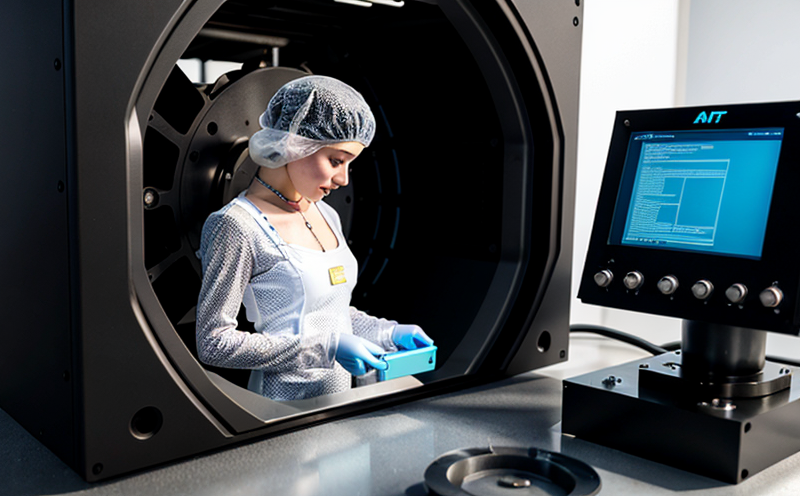ASTM F3187 Mechanical Property Verification for AM Validation Parts
The ASTM F3187 standard is a cornerstone in ensuring the mechanical integrity of parts manufactured through Additive Manufacturing (AM) processes. This service focuses on verifying the mechanical properties of validation parts, which are critical to confirming that an AM process can consistently produce parts with the required performance characteristics.
Understanding how this verification is conducted is essential for quality managers and compliance officers who need to ensure that their manufacturing processes meet stringent standards. R&D engineers and procurement teams benefit from knowing the nuances of ASTM F3187, as it helps in optimizing processes and selecting suitable materials for production.
The ASTM F3187 standard covers the mechanical property verification of parts produced using AM techniques. It ensures that these parts can withstand the stresses they will encounter during their intended use. This includes verifying properties such as tensile strength, yield strength, elongation at break, and hardness. The standard is particularly important in sectors like aerospace, automotive, medical devices, and defense, where part integrity is paramount.
One of the key aspects of this service is the verification process itself. It involves several steps that include selecting appropriate test specimens, preparing these specimens according to specific guidelines, conducting mechanical tests, and analyzing the results. The standard specifies the types of tests required for different AM processes and materials. This ensures consistency in testing across various industries.
Another critical element is the selection of test specimens. Specimens must be representative of the parts they are intended to validate. ASTM F3187 provides detailed instructions on how to select these specimens, ensuring that the tests accurately reflect the performance of the final product. This includes considerations for geometry, orientation, and material properties.
The testing process is rigorous and involves a range of mechanical property measurements. These include tensile testing, hardness testing, impact testing, and sometimes fatigue testing, depending on the part's requirements. The standard also specifies the instruments to be used in these tests, ensuring that they are capable of providing accurate results.
Once the tests are conducted, the data is analyzed to determine if the parts meet the specified mechanical property criteria. If the results do not meet the standards set by ASTM F3187, adjustments may need to be made to the AM process or material selection. This iterative approach helps in achieving consistent part performance.
The importance of this service cannot be overstated in today's manufacturing landscape. With increasing demands for lightweight, high-performance parts, ensuring that these parts meet mechanical property standards is crucial. ASTM F3187 provides a robust framework for achieving this.
By adhering to the ASTM F3187 standard, manufacturers can build trust with their customers and comply with regulatory requirements. This service is not just about meeting standards; it's about ensuring that every part produced through AM processes meets the highest quality standards possible.
Why It Matters
The ASTM F3187 Mechanical Property Verification for AM Validation Parts plays a critical role in several key areas of manufacturing and engineering. First, it ensures consistency in part production. By verifying mechanical properties, manufacturers can confirm that their processes are reliable and capable of producing parts with consistent performance characteristics.
- Consistency in part quality
- Reduced risk of defects
- Improved product reliability
- Enhanced customer trust
Second, this service helps meet regulatory requirements. Many industries have stringent standards that must be met for parts to be used in critical applications. ASTM F3187 provides a pathway to compliance, ensuring that manufacturers are meeting the necessary criteria.
Third, it supports innovation and process improvement. By verifying mechanical properties, R&D teams can identify areas for improvement in their processes. This leads to more efficient manufacturing methods and higher-quality products.
Scope and Methodology
| Test Type | Description | Instruments Used |
|---|---|---|
| Tensile Testing | Determines the tensile strength, yield strength, and elongation of parts. | Mechanical testing machine with a tensile attachment |
| Hardness Testing | Measures hardness across various scales (e.g., Rockwell, Vickers). | Hardness tester |
| Impact Testing | Evaluates the toughness and ductility of parts. | Charpy or Izod impact testing machine |
| Fatigue Testing (if required) | Assesses the resistance to cyclic loading. | Fatigue tester |
The ASTM F3187 standard provides a comprehensive scope for verifying mechanical properties. It specifies the types of tests that must be conducted, the instruments to be used, and the acceptance criteria for each test. This ensures that all parts produced through AM processes meet the necessary standards.
For tensile testing, specimens are prepared according to ASTM F3187 guidelines. The testing machine applies a controlled load until failure occurs, providing data on tensile strength and yield strength. For hardness testing, different scales may be used depending on the material properties of the part being tested. Impact testing assesses how parts behave under sudden loading, which is crucial for understanding their toughness and ductility.
In some cases, fatigue testing may also be required to evaluate the resistance to cyclic loading. This is particularly important for parts that will experience repeated stress cycles during use. The ASTM F3187 standard provides detailed instructions on how to conduct these tests, ensuring that they are performed accurately and consistently.
Benefits
- Enhanced Product Quality: Ensures parts meet the required mechanical property standards.
- Increased Customer Trust: Builds confidence in the reliability of AM processes.
- Compliance with Regulations: Helps manufacturers comply with industry-specific standards and requirements.
- Improved Process Efficiency: Identifies areas for process optimization, leading to more efficient manufacturing methods.
- Innovation Support: Provides data that can be used to innovate and improve AM processes.
- Risk Reduction: Minimizes the risk of defects by ensuring parts meet mechanical property requirements.
The benefits of ASTM F3187 Mechanical Property Verification for AM Validation Parts extend beyond just compliance. It contributes significantly to product quality, customer trust, and innovation in manufacturing processes. By adhering to this standard, manufacturers can ensure that their products are reliable, consistent, and meet the highest standards possible.





